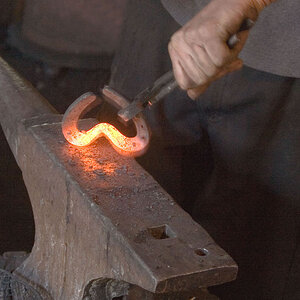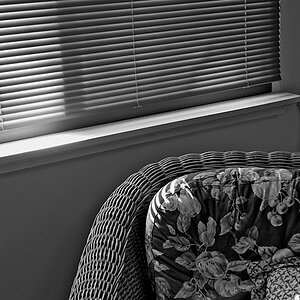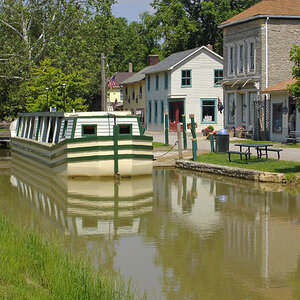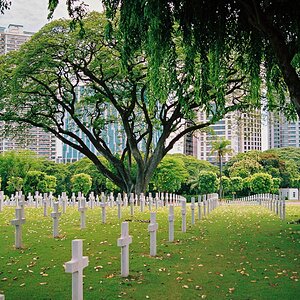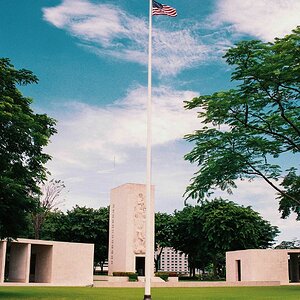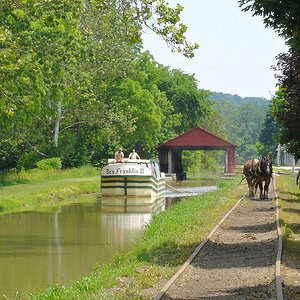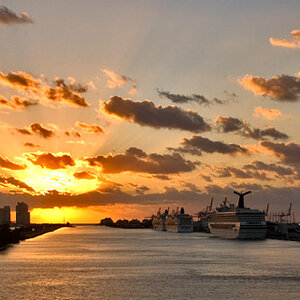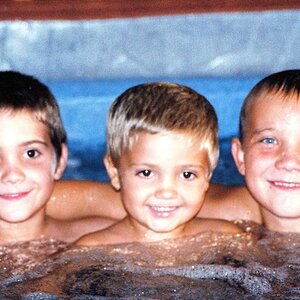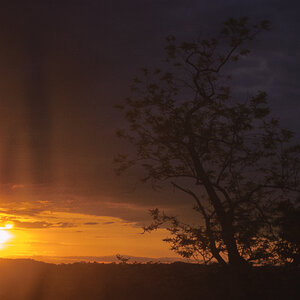adamhiram
No longer a newbie, moving up!
- Joined
- Feb 6, 2015
- Messages
- 858
- Reaction score
- 576
- Can others edit my Photos
- Photos OK to edit
I recently picked up a boom arm to use in my lighting setup, and was wondering if anyone had any tips on positioning a softbox on it? As a simple example, let's say I want to position a rectangular softbox angled down at 45 degrees from above, such as with with butterfly lighting or illuminating the background.
On a standard light stand, this is fairly straightforward - just mount it and angle it down. However this results in a light stand being in the shot, which is the whole reason for using a boom arm.

If I position the boom arm at exactly 90 degrees to the light stand, positioning the softbox is still pretty simple. Instead of the spigot being vertical, now it's horizontal, and I just pivot the boom arm to get the angle I am looking for.

But what about when the boom arm is on an angle, which seems like a pretty common setup? Without a ball head or additional angled adapter on the end, I now have 2 adjustments to make, neither of which seems as straightforward. I have to pivot the boom arm to get it close, then angle the light until it is on the right plane, before mounting the softbox and positioning the stand where I want it.

Is there a simpler way to make these adjustments? Am I better off using the arm at a right angle to make positioning of the light easier?
I've used larger boom arms with geared controls, such as the Manfrotto 025BS super boom that makes these adjustments much easier, but I'm working with an inexpensive Impact Mid-Range Boom Arm with an S-Type Speed Light Adapter, making adjustments more tedious, albeit at 1/8 the cost.
On a standard light stand, this is fairly straightforward - just mount it and angle it down. However this results in a light stand being in the shot, which is the whole reason for using a boom arm.
If I position the boom arm at exactly 90 degrees to the light stand, positioning the softbox is still pretty simple. Instead of the spigot being vertical, now it's horizontal, and I just pivot the boom arm to get the angle I am looking for.
But what about when the boom arm is on an angle, which seems like a pretty common setup? Without a ball head or additional angled adapter on the end, I now have 2 adjustments to make, neither of which seems as straightforward. I have to pivot the boom arm to get it close, then angle the light until it is on the right plane, before mounting the softbox and positioning the stand where I want it.
Is there a simpler way to make these adjustments? Am I better off using the arm at a right angle to make positioning of the light easier?
I've used larger boom arms with geared controls, such as the Manfrotto 025BS super boom that makes these adjustments much easier, but I'm working with an inexpensive Impact Mid-Range Boom Arm with an S-Type Speed Light Adapter, making adjustments more tedious, albeit at 1/8 the cost.


